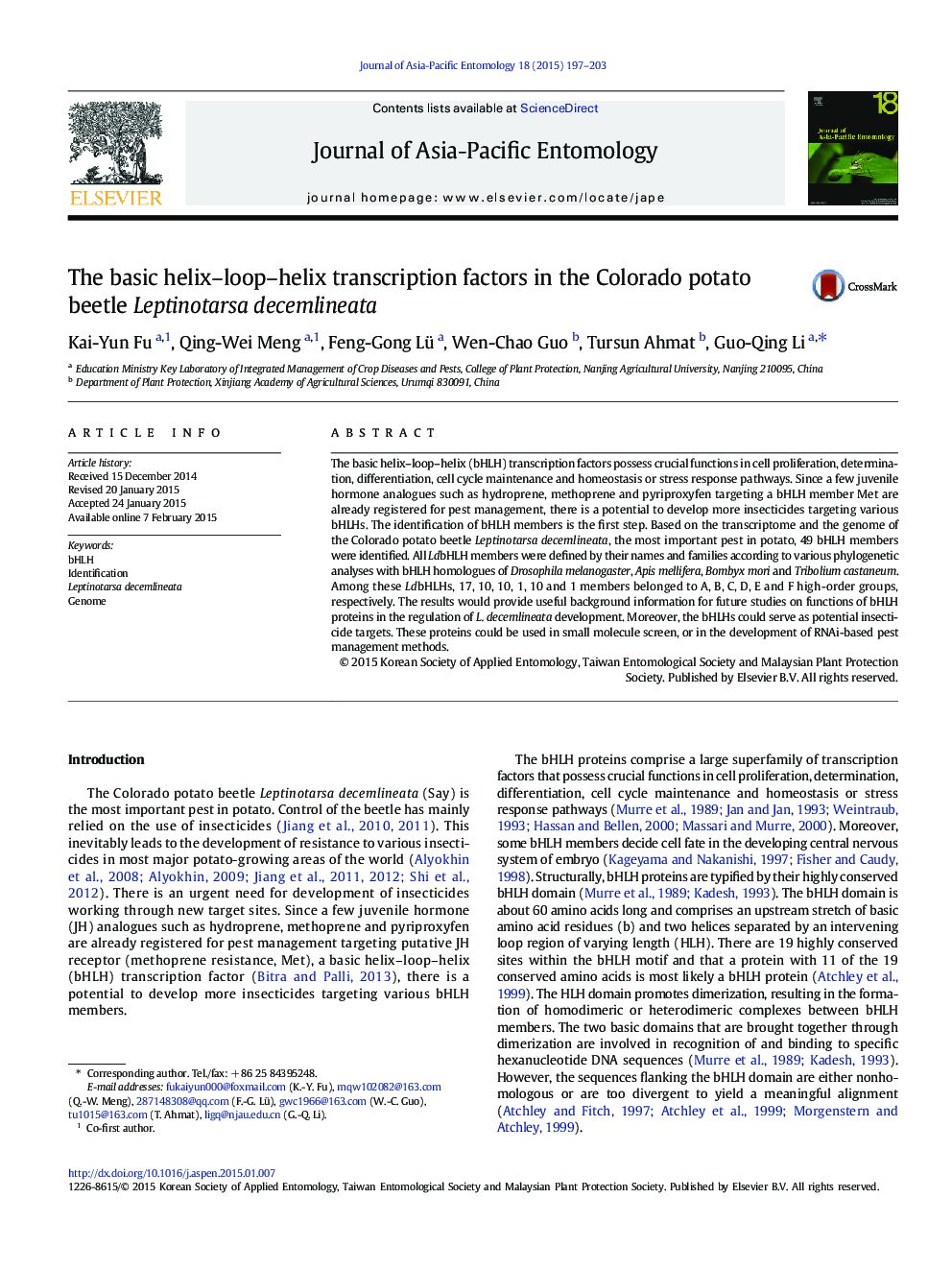| Article ID | Journal | Published Year | Pages | File Type |
|---|---|---|---|---|
| 4524466 | Journal of Asia-Pacific Entomology | 2015 | 7 Pages |
•Forty-nine basic helix–loop–helix (bHLH) transcription factors were identified.•There were 17, 10, 10, 1, 10 and 1 members in groups A, B, C, D, E and F, respectively.•Our results facilitate further researches.
The basic helix–loop–helix (bHLH) transcription factors possess crucial functions in cell proliferation, determination, differentiation, cell cycle maintenance and homeostasis or stress response pathways. Since a few juvenile hormone analogues such as hydroprene, methoprene and pyriproxyfen targeting a bHLH member Met are already registered for pest management, there is a potential to develop more insecticides targeting various bHLHs. The identification of bHLH members is the first step. Based on the transcriptome and the genome of the Colorado potato beetle Leptinotarsa decemlineata, the most important pest in potato, 49 bHLH members were identified. All LdbHLH members were defined by their names and families according to various phylogenetic analyses with bHLH homologues of Drosophila melanogaster, Apis mellifera, Bombyx mori and Tribolium castaneum. Among these LdbHLHs, 17, 10, 10, 1, 10 and 1 members belonged to A, B, C, D, E and F high-order groups, respectively. The results would provide useful background information for future studies on functions of bHLH proteins in the regulation of L. decemlineata development. Moreover, the bHLHs could serve as potential insecticide targets. These proteins could be used in small molecule screen, or in the development of RNAi-based pest management methods.
Graphical abstractFigure optionsDownload full-size imageDownload as PowerPoint slide
